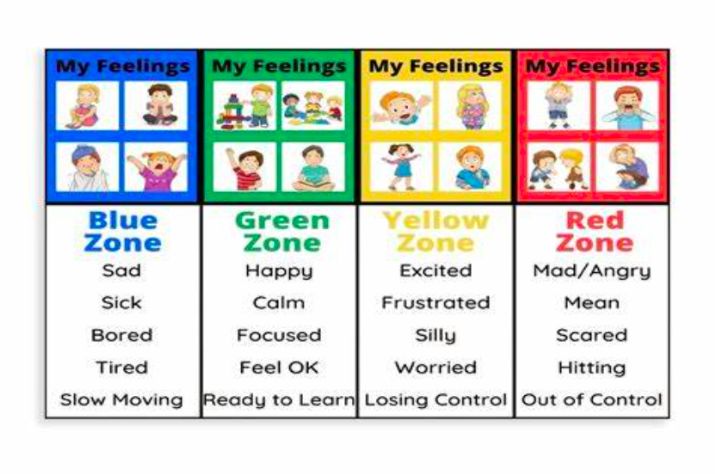How do I help my students regulate their behaviour?
Discover innovative strategies for professional development through collaborative and relationship-based models tailored for educators in New Zealand.
5/8/20244 min read


How do I help my students regulate their behaviour?
Helping students regulate their behaviour starts with understanding that all behaviour is communication, often reflecting un-met needs, lagging skills, or unresolved stress. Here’s a relational, trauma-informed, and culturally responsive approach, integrating the models you're working with:
🔵 1. Start with Safety and Regulation (Dr Bruce Perry – Regulate–Relate–Reason)
Before learning or behaviour change is possible, students must feel physically and emotionally safe. If a student is dis-regulated (angry, anxious, withdrawn), start by helping them return to a regulated state.
Strategies:
Use calm tone and body language.
Offer co-regulation: sit nearby, breathe together, go for a walk.
Use sensory tools (fidgets, heavy work, calming spaces).
Build predictable routines to reduce anxiety.
Remember: You can't reason with a student who's dis-regulated.
🟡 2. Build Connection (Whanaungatanga, CPS Plan B, Zones of Regulation)
Relational trust is the foundation for behavioural growth. Invest in daily connection rituals and genuinely get to know your students — their whānau, culture, interests, and strengths.
Strategies:
Greet students by name, with warmth and presence.
Use the Zones of Regulation to create a shared language for emotions.
Include check-ins and emotional literacy in your routine (e.g., “What zone are you in?”).
Practice Plan B conversations when problems arise (more on that below).
🔴 3. Identify the Root Cause (Not Just the Behaviour) – Dr. Ross Greene
Rather than asking "How do I make this behaviour stop?" ask:
"What is getting in the way of this student showing up as their best self?"
Use Collaborative & Proactive Solutions (CPS) to uncover:
Lagging skills (e.g., emotional regulation, flexibility, communication)
Unsolved problems (e.g., noisy environments, social conflict, unmet learning needs)
⚫ 4. Use Plan B Conversations (CPS Model)
Instead of reacting to behaviour, work with students to solve problems proactively and collaboratively. Here's a quick guide:
Step 1: Empathy
“I noticed you’ve been walking out of the classroom during group work. What’s going on?”
Step 2: Define the Problem
“I see. The noise makes it hard for you to focus. I also need to make sure everyone is safe and learning.”
Step 3: Invitation to Collaborate
“Can we think of a plan together that helps you focus without feeling overwhelmed, and also keeps the class learning?”
🟢 5. Co-construct Regulation Strategies
Support students to find what helps them regulate — and give them ownership.
Examples:
“What helps you feel calm again?”
“Would a break card help you?”
“Could we make a toolbox of strategies for when you’re in the red zone?”
Create a calm corner or whare of emotions that includes:
Emotions visuals (Zones)
Whakataukī or karakia for reflection
Sensory tools
Student-made strategies
🟠 6. Be Strengths-Based and Culturally Responsive
Use Niho Taniwha and Teaching to the North-East principles:
Acknowledge identity and whakapapa.
Hold mana-enhancing expectations.
Position students as capable learners with voice in their journey.
✅ 1. Plan B Conversation Template
(From Dr. Ross Greene’s Collaborative & Proactive Solutions)
Use this when addressing recurring challenging behaviour proactively and relationally.
🧩 Step 1: Empathy (Gather Information)
“I’ve noticed [insert neutral observation]. What’s going on?”
Listen without judgment.
Don’t rush to fix or correct.
Use prompts: “Can you tell me more about that?” “What’s hard about it?”
🧩 Step 2: Define the Problem
“I hear you. Here’s what I’m concerned about…”
Explain your perspective or classroom need (e.g., safety, learning environment).
Be honest, calm, and specific.
🧩 Step 3: Invitation to Collaborate
“I wonder if we can come up with a plan that works for both of us?”
Brainstorm together.
Let the student lead when possible.
Ensure the plan is realistic and re-visitable.
Tip: Keep these conversations short, focused, and regular — not once-offs.
✅ 2. Zones of Regulation Visual (Editable Tool)
I’ll find you a printable Zones of Regulation visual with:
The four colour zones (Blue, Green, Yellow, Red)
Common feelings and behaviours in each
Strategy space for student input
1. Zones of Regulation Visuals & Check‑In Tool
Purpose: Create a shared language for emotions, body states, and regulation strategies.
What to include:
The four zones (Blue, Green, Yellow, Red) with common feelings or body states for each.
Possible strategies (tools) for moving toward or within zones.
A daily check‑in board or cards: students choose which zone they’re in (or moving toward).
How to use:
Teach the zones explicitly, with examples and discussion.
Use the check-in daily (morning, after break, after transitions).
When a student is dysregulated, refer back to the zones (“Which zone are you in right now?”) and help them choose a “tool” to get back toward green.
Tip: Make the visuals student‑friendly (with their input). Let them help name feelings or add strategies that work for them.
2. Calm Corner / Regulation Space Setup
Purpose: Give students a safe space to self‑regulate using tools they’ve selected.
What to include:
Zones of Regulation chart or visuals.
Sensory tools: fidget toys, stress balls, textured materials.
Calm-down options: breathing posters, calming music, visual cues (e.g. “Stop, Breathe, Think”).
Reflecting prompts: “Which zone am I in?”, “What do I need right now?”
Exit signal: something student‑initiated (e.g. a card they can show when ready to return).
How to use:
Teach and practice using the space; walk through how a student might choose to go there.
Use co-regulation (sit beside, breathe together) at first.
Revisit and revise tools with students (what’s working, what isn’t) using Plan B style conversations.
3. Plan B Conversation Template (Simplified)
Use this when a student repeatedly struggles with regulation. You don’t “discipline”, you collaborate.
1. Empathy (Gather information)
“I noticed you [observation]. What’s happening for you?”
2. Define the problem (Your perspective)
“I’m concerned because [impact on class, safety, learning].”
3. Invitation to collaborate
“Can we think together of a plan that helps you and also helps me (and the class)?”
Tips:
Keep tone calm, curious, nonjudgmental.
Write or draw the plan together.
Check in later: “How’s this plan working for you?”
If the plan isn’t working, go back to Step 3 and rework collaboratively.


Contact
Get in touch with us
Connect
michelle@armadillo.org.nz
© 2025. All rights reserved.